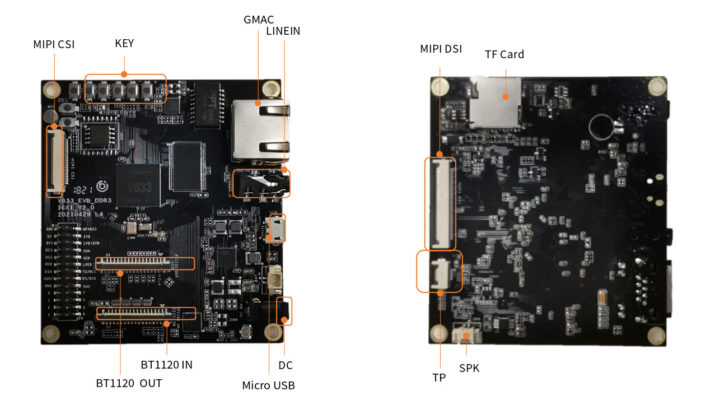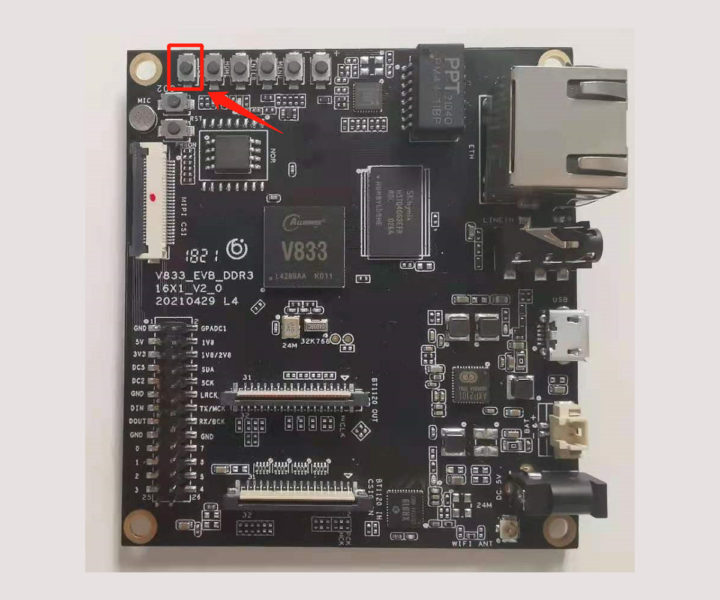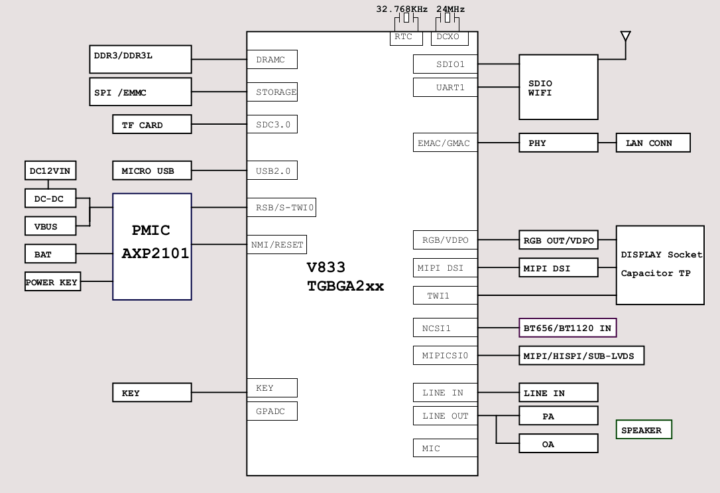Lindenis V833 is an AI video/camera development board based on Allwinner V833 single-core Cortex-A7 processor with a 400 MOPS AI accelerator (NPU) and running OpenWrt-based Tina Linux or Melis RTOS based on the RT-Thread kernel.
The board comes with up to 3GB RAM, a MicroSD card socket, MIPI DSI, MIPI CSI, and BT1120 interfaces for video output and input, Gigabit Ethernet, 2.4 GHz WiFi, and a few other I/Os.
Lindenis V833 specifications:
- SoC – Allwinner V833 single-core Arm Cortex-A7 processor @ up to 1.2 GHz with H.265/H.265 1080p video encoder, MJPEG 1080p video encoder, 400 MOPS AI accelerator (See PDF datasheet)
- System Memory – Up to 3GB DDR3/DDR3L
- Storage – MicroSD card slot with support for SDHC and SDXC, SPI NOR flash
- Display Interfaces
- 4-lane MIPI-DSI up to 1080p
- BT1120 output
- Touch panel header
- Video In
- 4-lane MIPI-CSI camera interface
- BT1120 input
- Audio – 3.5mm Line-in jack, built-in microphone
- Connectivity
- 10/100M Ethernet RJ45 port
- 2.4 GHz WiFi 4 via Allwinner XR819 module
- Expansion – 2x 13-pin header with I2C, I2S, PWM, GPIO, GPADC
5V, 1V8, 2V8, and GND - Misc – Buttons for menu, volume, and firmware update, G-sensor (DA380),
- Power Supply
- 12V DC via DC jack
- 5V/2A via micro USB port
- 3.7V Li-Ion battery connector
- Dimensions – 75 x 68mm

Lindplayer video player, and Lindcamera camera app.
Note that some of the information is not very accurate, notably the memory and storage options are not clear, and it’s better to double-check the information using the schematic and other documents. You’ll also find several repositories on Github.
Allwinner V833 processor is similar to Allwinner V831 we previously reported on, but with a higher CPU clock (1.2 GHz vs 800 MHz), external memory support instead of on-chip DDR2, and a more powerful NPU (400 MOPS vs 200 MOPS). There’s also some reverse-engineering work taking place on Allwinner V831/V833 NPU to develop open-source tools.
Lindenis V833 is the third video/camera board using Allwinner V-series, with the company having previously launched the Lindenis H5 and Lindenis V536 (4K) camera boards, but with different form factors, so there’s no hardware/electrical compatibility between the boards.
Lindenis V833 development board can be purchased for $125 on Aliexpress, but again there’s no information about memory capacity and the type of storage soldered to the board.

Jean-Luc started CNX Software in 2010 as a part-time endeavor, before quitting his job as a software engineering manager, and starting to write daily news, and reviews full time later in 2011.
Support CNX Software! Donate via cryptocurrencies, become a Patron on Patreon, or purchase goods on Amazon or Aliexpress






